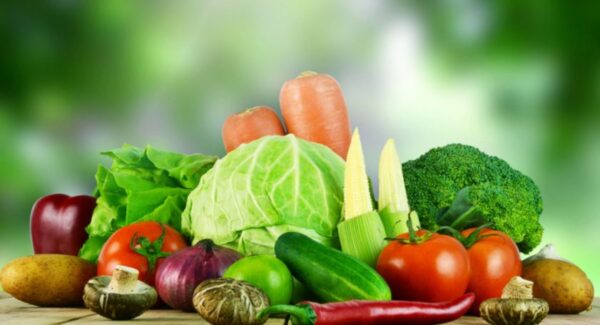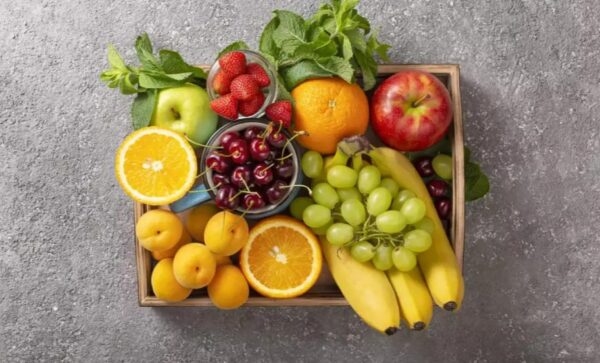Lifestyle
6 vegetables that are actually fruits

Do you know that some of the ‘vegetables’ that you use daily in the kitchen are actually fruits?
While the line between fruits and vegetables can be very blurry, especially in the cooking realm, from the botanical standpoint many of the foods we tend to think of as vegetables are actually fruits.
According to botanical science, the fruit needs to be a part of the flower of the plant as well as ought to contain some seeds while a vegetable is any other part of the plant; the vegetable could be roots, stems, or leaves.
Here are 6 common veggies that are indeed fruits.
1. Tomato
Tomatoes are one of the clear-cut examples of a fruit mistaken for a vegetable. While tomatoes are used the world over in a myriad of salads, sauces, and dishes, their botanical classification says otherwise. This is because tomatoes have flowers with seeds, meaning that they have a flowering mechanism to grow into a fruit. Really, though it is cooked or raw, there’s no denying tomatoes as being fruits. In fact, they are perhaps one of the most commonly seen fruits mistaken for being a vegetable.
2. Capsicum
Capsicum, or bell peppers, come in a wide range of bright colors like red, yellow, and green. These brightly colored “vegetables” make their way into salad dressings, stir-fries, and pickles. Botanically, however, they are fruits. Like tomatoes, capsicum is typically seeded and develops from the plant flowers. It does put them squarely in the fruit family, though they appear quite often in savory dishes. Whether grilled, sautéed, or raw, capsicum adds a wonderful crunch and sweetness, but remember, it is a fruit by its very nature.
3. Eggplant
Eggplant, is another fruit which is often mislabeled as a vegetable. It appears frequently in cuisines of the world, from curries to Mediterranean dishes like moussaka. But since it bears seeds and grows from the flower of the plant, eggplant is, in fact a fruit. Whether grilled or roasted, the possibility of stir-frying, this one particular ingredient will always contribute to making any meal delicious. While the gourds are put into savoury dishes, the thing remains that botanically it’s a fruit, of which people remain largely ignorant.
4. Pumpkin
Pumpkin, a fall and holiday staple in many forms, is yet another fruit mistaken for a vegetable. Pumpkin is incorporated into soups, pies, and curries, though the presence of seeds and its development from the flowering part of the plant makes it technically a fruit. From pumpkin puree to roasted pumpkin dishes, this nutrient-dense fruit is loaded with vitamins and minerals. Amazingly, Pumpkin is classified as a fruit, despite the fact that most believe it to be a vegetable, but its anatomy proves otherwise.
5. Bitter gourd
This Bitter gourd also known as bitter melon is mostly avoided because of its very bitter taste but holds a very high rank in terms of the health that it provides. Although bitter gourd is mostly cooked like a vegetable, it is a fruit because it grows from a flower of the plant and has seeds. A bountiful source of nutrition, bitter gourd is often found in traditional medicine, which is used for various health-related treatments. Although held to be not very appetizing by many people, bitter gourd is actually a fruit.
6. Lady’s finger
Ladyfinger, or okra, is a common ingredient in many kitchens. It is more often cooked like a vegetable than being a true one, though okra technically is considered a fruit since it holds seeds and grows from the plant’s flower. All these items in this list are fruits because they grow on the plant from the flower and will contain seeds. It is famous for its sticky texture when cooked but it gives a special flavor and texture to range of recipes when used properly, however though it is found in the salad, the okra itself is a fruit.
Isn’t it incredible the way some of the most common “vegetables” in our kitchens are, botanically speaking, fruits? Knowing fruits and vegetables-or rather, the difference between them, especially from the botanical point of view-quells curiosity, helps appreciate the diversity and versatility of these foods. Though they’re cooked or used like vegetables, their essence has to do with that seed-bearing structure and flower development.
The next time you crave a tomato, capsicum, or pumpkin, you will in reality be handling a fruit—though you might be using them in your favorite recipes differently. These fruits disguised to a large extent play a huge role in international cuisine, providing necessary nutrition and an added depth in so many dishes. Whether it is a salad, curry, or side dish, this knowledge that those veggies are actually fruits, well, it gives a fun twist to your adventures in the culinary world.










